At Least Seven More Protesters At Grave Risk Of Execution In Iran
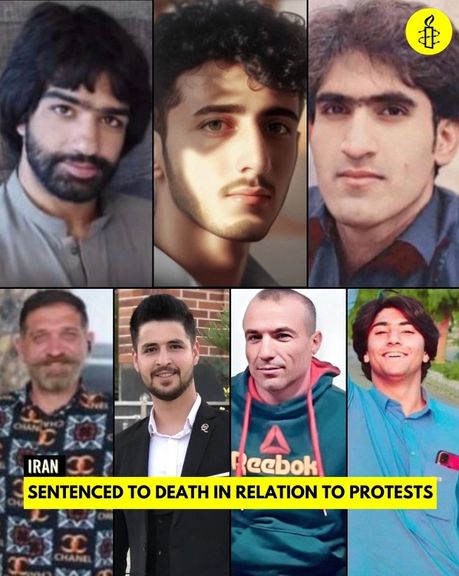
At least seven more Iranians have been given the death sentence in connection with nationwide protests, according to rights group Amnesty International, with dozens more at risk.

At least seven more Iranians have been given the death sentence in connection with nationwide protests, according to rights group Amnesty International, with dozens more at risk.
At least 259 Iranians have been executed since January alone, according to the United Nations.
Amnesty claims Ebrahim Narouie, Kambiz Kharout, Manouchehr Mehman Navaz, Mansour Dahmardeh, Mohammad Ghobadlou, Mojahed (Abbas) Kourkour and Shoeib Mir Baluchzehi Rigi are at grave risk of imminent execution with four others facing retrials on capital charges.
Amnesty said it is aware of at least three others who have undergone trial on charges that carry the death penalty.
“The authorities have violated their fair trial rights and subjected many to torture and other ill-treatment, including floggings, electric shocks, death threats and sexual violence,” said the rights group.
Amid a spike in executions since late April, on May 19, authorities arbitrarily executed three tortured protesters, Majid Kazemi, Saeed Yaghoubi and Saleh Mirhashemi who were unjustly convicted and sentenced to death in Isfahan (Esfahan).
Amnesty also urged the Iranian authorities to “immediately quash all convictions and death sentences stemming from the protests, refrain from seeking further death sentences, and ensure that anyone charged with a recognizable criminal offence is tried in proceedings meeting international fair trial standards without recourse to the death penalty.”
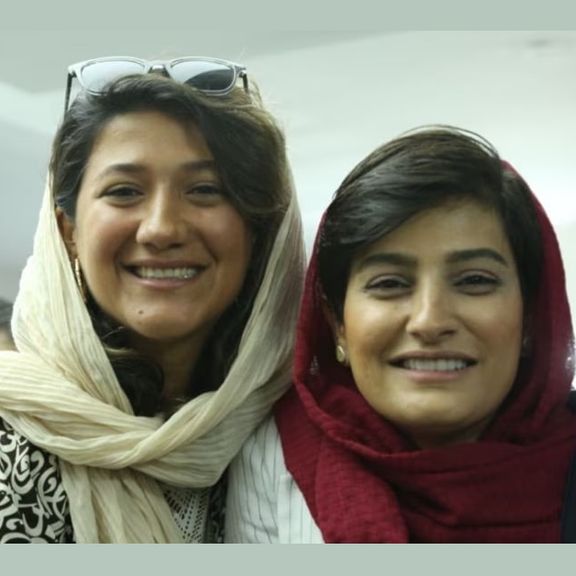
Niloufar Hamedi and Elahe Mohammadi, two journalists arrested for reporting the death of Mahsa Amini, will stand trial next week.
The hearing will begin on May 29 according to the Judiciary Spokesman Masoud Setayeshi.
Niloofar Hamedi and Elahe Mohammadi were arrested nine months ago for coverage relating to the controversial death of the young Iranian-Kurd who died in police custody, sparking months of nationwide protests.
Dozens of activists and human rights groups have criticized the lack of access of these two journalists to their lawyers.
On Tuesday, Mohammad Hossein Ajorlou, the husband of Niloufar Hamedi, wrote on Twitter that after the ninth month of detention, the hearing date is determined, but has not been communicated to the two, nor to the lawyers.
"Less than a week until the hearing, the lawyers still haven't been able to talk with their clients," Ajorlou wrote.
Meanwhile, the Committee for Protection of Journalists slammed the judicial system, reaffirming that journalism is not a crime.
Iran's Ministry of information and the IRGC Intelligence Organization in a joint statement on October 28 accused Hamedi and Mohammadi of spying for several foreign agencies including the CIA, MI6 and Mossad.
In the latest Freedom House report, Iran ranked 12th out of 100 countries for lack of freedoms, including rights to free speech.

Amid global outcry over the Islamic Republic’s execution spree, which has seen over 200 people hanged this year alone, the regime has finalized the death sentence of another protester.
Amir Raisian, one of the lawyers of Mohammad Ghobalou, said Tuesday that the supreme court has upheld his client’s death sentence regardless of the objections and documents that could potentially exonerate him.
The judiciary claims that Ghobadlou "killed an officer and injured several others" by running over them with his car during protests. He was given the death sentence in initial hearings on charges of "corruption on Earth"and “Moharebeh” in a session without the presence of his lawyer. Later, a court in Tehran issued a verdict, sentencing him according to the Islamic criminal code to ‘qisas,’ or punishment in kind.
Moharebeh (also transliterated as muharebeh) is an Islamic-Arabic term that in the lexicon of the Iranian regime means "fighting God” or “war against God,” and carries the death penalty. “Corruption on earth” is also another term that carries the death penalty. ‘Qisas' is a Quranic principle similar to “an eye for an eye” or the law of talion.
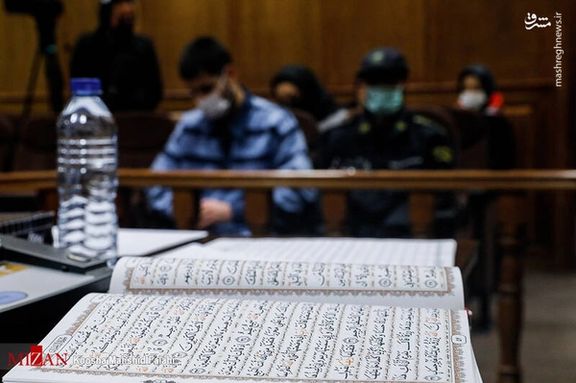
His lawyer added that the court rejected their appeal, saying that documents issued by the forensic and legal medicine authorities about Ghobalou’s mental health, as well as footage of CCTV images, are not related to this stage of the procedure. Raisian said the court did not inform them about the timing of his execution.
Ghobalou’s family and his lawyers have published medical documents, proving that he has been under treatment for bipolar disorder for at least seven years.
According to Dadban, a team of volunteers who provide legal advice to activists and protest victims, the circumstances surrounding the death of the police officer – identified as Farid Karimpour Hasanvand – reeks of contradictions, adding that Ghobalou was not involved in any fatal accident. “The forensic report shows that the police officer was killed as a result of being hit on the head by a hard object and definitely in a fight, not an accident,” a narrative that had been confirmed by police commanders at the officer’s funeral.
Clara Anne Bünger, founder and board member of Equal Rights Beyond Borders, a Greek-German human rights organization enforcing has taken on the political sponsorship of the 22-year-old.
“The EU must ensure that judges like him never find a safe place in the EU,” Bünger had said in a tweet.
The Islamic Republic has intensified its killing trend in recent weeks, fueling further protests across the country. Unrest this week followed the hanging of demonstrators Majid Kazemi, Saeed Yaghoubi and Saleh Mirhashemi on May 19.
The deaths brought to at least seven the number of protesters hanged since nationwide protests broke out in September 2022 following the death in custody of 22-year-old Mahsa Amini. The unrest posed the biggest internal challenge to the Islamic Republic since its establishment in 1979.
Also on Tuesday, Amnesty International said at least seven individuals in Iran face the death sentence in connection with protests, while dozens of others are at risk of being sentenced to death.
“The authorities have violated their fair trial rights and subjected many to torture and other ill-treatment, including floggings, electric shocks, death threats and sexual violence,” the human rights group added.
In a letter to Iran’s chief justice Gholamhossein Mohseni-Ejei, Amnesty said, “On 19 May, authorities arbitrarily executed Majid Kazemi, Saleh Mirhashemi and Saeed Yaghoubi, who were unjustly convicted and sentenced to death in a trial that relied on torture-tainted 'confessions’ and which bore no resemblance to meaningful judicial proceedings.”
So far, around 500 civilians have been killed by security forces and at least 20,000 arrested. While many have been released, around 1,500 face criminal charges, and at least 80 detainees face the death sentence.
According to unconfirmed reports, at least 10 underage protesters are also facing death sentences for the “moharebeh” and “corruption on earth”.
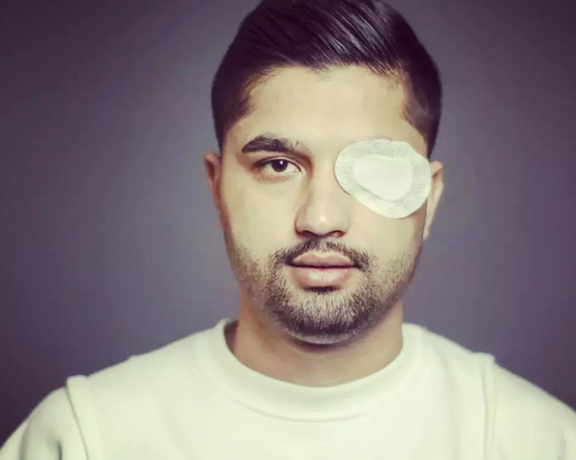
An Iranian protester, who lost an eye by a bullet fired by government agents, was arrested on Friday and there is no information about his whereabouts.
Amir Velayati, a 24-year-old man, who lost his eye during the first week of protests triggered by the September death of Mahsa Amini, was detained as the Iranian regime intensified pressures against protesters.
According to one of his friends, Velayati was rejected by several hospitals when he was injured but finally was admitted to one where he was told a pellet was lodged 1 millimeter away from his brain, Iran Wire reported in March.
Harsh Naqshbandi, an actor and theater director is another victim who lost an eye and was arrested in recent days with no information about his current whereabouts either.
Parsa Ghobadi, another protester who lost both eyes, was detained along with his brother recently. He was released after a few days, but his brother is still in custody.
Meanwhile, Iran International's sources report threatening phone calls from security organizations to women whose eyes were damaged in last year's nationwide protests, asking them not to write anything about their injury on social media.
Last month, a report by Norway-based Iran Human Rights confirmed earlier speculations that the Islamic Republic security forces have been systematically targeting protesters’ eyes.
The human rights group documented over 20 cases of people being blinded in one eye as a result of fire from the security agents during protests, adding that initial data indicates young women were disproportionately represented among people who had sustained such injuries.
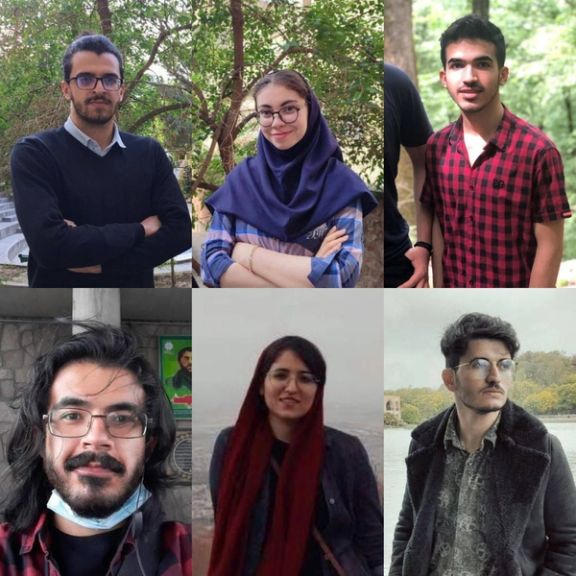
Eight students have been deprived of education for up to two years or exiled to other cities as punishment for protesting the wave of chemical attacks in Iran's universities and schools.
The students of Tabriz University of Medical Sciences received the punishments for participating in a rally back in March against attacks which have affected thousands of girls across the country.
Last week, over 2,000 students signed a petition demanding the cancellation of the heavy sentences of the disciplinary committee against their colleagues.
Close to 300 schools were targeted in the past Iranian year without any apparent serious effort by the government to identify and pursue the perpetrators, nor to explain to terrified parents and students what was happening.
A new wave of chemical attacks began after the new year holidays in late March.
Thousands of students have been affected, mostly girls, with hundreds hospitalized and symptoms including respiratory distress, numbness in their limbs, heart palpitations, headaches, nausea, and vomiting.
Iran's student movement gained momentum last year amid the "Woman, Life, Freedom" protests following the death in custody of Mahsa Amini. Universities were the scene of large anti-regime demonstrations.
According to the US-based Human Rights Activists News Agency (HRANA), 637 students from 144 universities have been arrested since mid-September.
Some sources inside Iran have also announced that the number of detained students is more than 700.

An Iranian prisoner on death row has died of cardiac arrest caused by the stress of imminent execution, a rights group reported.
Milad Bahmanzadeh, who had been convicted of murder and sentenced to death, died of a heart attack in Tabriz prison northwest of Iran because of the huge stress and anxiety of his possible execution, Hengaw Organization reported.
Bahmanzadeh lost his life on Sunday, hours after he was transferred to the special ward where prisoners on death row are held.
Over the past few weeks, the Islamic Republic has hanged dozens of prisoners, including protesters, as part of an execution spree widely condemned by the international community.
The number of executions in Iran started to rise after President Ebrahim Raisi – the former head of the country’s notorious judiciary -- took office in August 2021 but the recent exponential spike has triggered concern at home and abroad.
The United Nations said earlier this month that Iran has executed 209 people so far this year, calling the record "abominable". The number has further grown in recent days, particularly with the regime's execution of three political prisoners Majid Kazemi, Saleh Mirhashemi and Saeed Yaghoubi.
Last week Amnesty International condemned the execution spree, and said it "opposes the death penalty in all cases without exception, regardless of the nature or circumstances of the crime; guilt, innocence or other characteristics of the individual; or the method used by the state to carry out the execution."